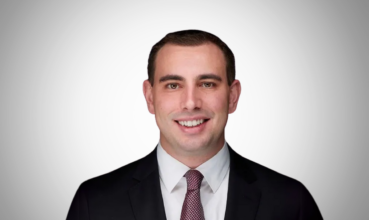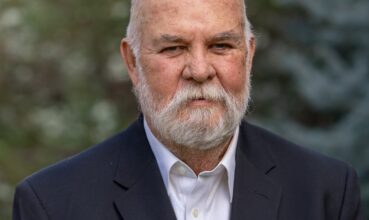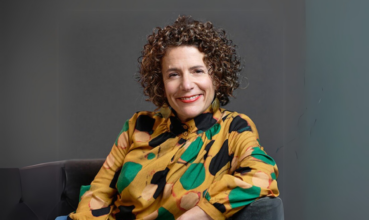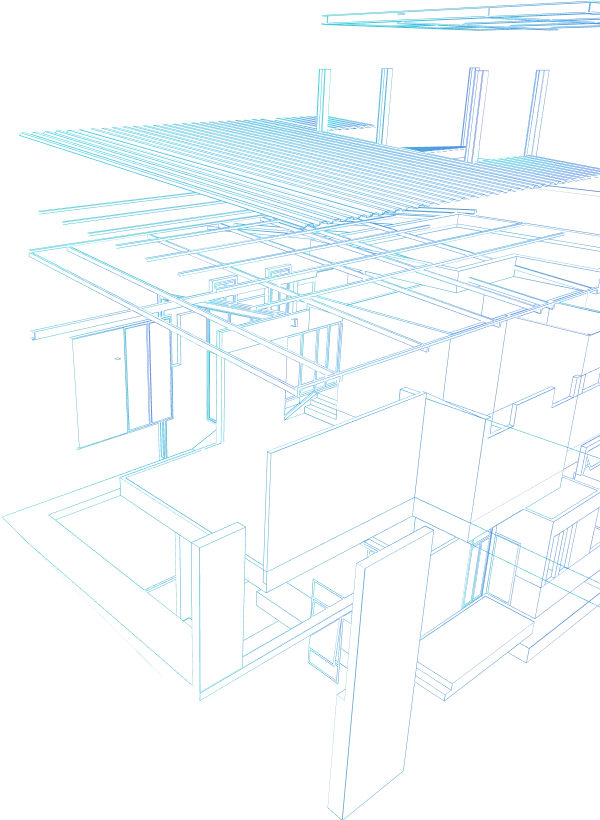“I knew that business model—that hustle, push, force business model—wouldn’t inspire me, nor would it sustain me,” reflects Pam Blair, founder of YogaBug Real Estate in...
Bo Kemp's Vision for Chicago's South Suburbs Through the Southland Development Authority




Economic development in Chicago’s south suburbs is getting a refresh with a focus on local strength first. The Southland Development Authority (SDA) is challenging traditional approaches that prioritize outside investment, instead working from within to build a more sustainable foundation for growth.
“Ask what they do in order to keep you, not what they will do to get you,” says Bo Kemp, Managing Director of the SDA, describing the organization’s distinctive strategy.
This philosophy drives the SDA’s innovative “inside-out” model, which is transforming economic prospects across a region of nearly 60 municipalities, most with populations under 15,000. By first supporting existing businesses and strengthening communities, the SDA is creating an environment where organic growth can thrive and new investment is drawn in naturally.
From Wall Street to Community Development
Kemp brings a uniquely diverse background to his leadership role at the SDA. “I’ve lived in nine cities in the U.S. and three overseas,” he explains, giving him firsthand experience with different markets nationwide.
After beginning his career in mergers and acquisitions at Morgan Stanley and then moving into private equity, Kemp became an entrepreneur, raising over $100 million for various businesses. A pivotal moment came in 2005 when Hurricane Katrina destroyed his New Orleans business, leading him to work with Cory Booker’s mayoral campaign in Newark, New Jersey.
When Booker won, Kemp served as Business Administrator—essentially the city manager—overseeing all departments and employees. “That grounded me in an understanding of markets in a different way than someone who’s only been either an entrepreneur or only been an investor,” Kemp notes.
This experience led to consulting roles with about a dozen municipalities nationwide, with a growing focus on economic development. After serving on the Council of Economic Advisors for Cook County for several years, Kemp helped create the Southland Development Authority in November 2019, initially as co-chair before becoming CEO in 2021.
The Pandemic Pivot: Finding Opportunity in Crisis
The SDA’s founding just months before the COVID-19 pandemic forced an immediate rethinking of traditional economic development approaches.
“Most regional economic development groups are focused on what I would call an outside-in strategy,” Kemp explains. “They’re trying to attract capital, businesses, people that are outside of the region already.”
When the pandemic hit, “nobody was trying to move. People were just trying to stay alive,” Kemp recalls. This crisis prompted the SDA to innovate, creating what was initially called a stimulus program and later evolved into their business growth services.
This program identifies and addresses the needs of existing businesses in the region, from solopreneurs making less than $50,000 annually to $35 million manufacturing operations. The SDA now serves 500-700 companies each year through this approach.
“It forced us to migrate from an outside-in strategy to an inside-out strategy,” Kemp says. “All of our efforts really centered around understanding the needs of the businesses that are already committed. They’ve already invested, they’ve already bought real estate, they already hire people in the Southland.”
The Monarch Fund: De-Risking Development
One of the SDA’s most innovative initiatives is the Monarch Fund, a $100 million investment vehicle that positions the organization as a “horizontal developer” to reduce risk for traditional investors and developers.
“Right now, we have about 280 acres under contract, which makes us one of the larger developers in the area, even as a not-for-profit,” Kemp says. Many of the end users are clients from their business growth services who now need to expand. For example, moving from a 35,000 square foot plant to a 70,000 square foot facility.
The SDA’s approach involves aggregating land, negotiating zoning and permitting, securing utilities, and obtaining state and local incentives. This comprehensive preparation allows traditional developers to focus solely on vertical construction.
“We might spend $10 million to acquire the 50 acres that are necessary to build a 300,000 square foot cold storage facility,” Kemp explains. “We’ll negotiate the zoning and the permitting and get a TIF and/or the other tax exemptions that are necessary. The vertical builder will come in and spend another $70 million to build vertically.”
The SDA offers flexible partnership models, sometimes selling the prepared land outright, sometimes taking an ownership stake in the project, and occasionally—when private investors aren’t available for essential community needs like grocery stores—building and owning the facility themselves while partnering with an operator.
Strategic Market Opportunities
The SDA is focusing on three primary asset classes that leverage the region’s unique advantages:
1. Industrial Development
The region’s strategic location creates significant opportunities for logistics: “Basically 60% of all cargo that goes throughout North America comes through the south suburbs in Chicago,” Kemp explains.
Cold storage facilities are a particular focus. “Cold storage is one of the key assets for us to build, and it happens to be one of the most expensive ones to build,” Kemp notes. “Us playing a direct role in supporting that actually ends up supporting the entire food ecosystem.”
Manufacturing, particularly metals, is another strength. “We have something called the metals hub, which is a collection of about 40 different metals companies that we support and work with,” says Kemp. The current push for reshoring manufacturing due to supply chain concerns creates additional opportunities in this sector.
2. Transit-Oriented Housing
“The south suburbs is the only place left in the Chicagoland region that has already built public infrastructure—multiple train stations—that we can build multi-family housing in proximity to, so people could live without a car and get in and out of the Chicago region,” Kemp explains.
Affordability is a key advantage: “We can build housing at $250,000 and $300,000, which is the most affordable housing you can build in the Chicago area.”
The SDA is pursuing both multi-family development around transit-oriented districts and single-family homes, either repurposing abandoned properties or building on empty lots.
3. Commercial Repurposing
The third focus area involves repurposing underutilized commercial properties like malls and strip centers to create mixed-use locations. “They often are on public transportation, they have the infrastructure that’s necessary,” Kemp notes, while acknowledging that “retail is changing rapidly and forever.”
Market Trends Driving Strategy
Two major trends shape the SDA’s approach to development:
Workforce Transformation
“The changing workforce is driven by the silver tsunami: people retiring, the baby boomers retiring,” Kemp explains. “It’s driven by the fact that immigration is changing, which means that the cheaper labor that’s necessary for a variety of different things, from construction to manufacturing to agriculture, is changing and possibly for a long period of time.”
This creates a skills mismatch between available workers and business needs. The SDA responds by coordinating industrial development with housing development, ensuring workers can live near employment centers, unlike the pattern of the 1980s when industrial facilities were built far from population centers.
Energy Infrastructure Advantage
The south suburbs have a competitive advantage in energy infrastructure that’s becoming increasingly valuable. “The dark fiber that runs into the city of Chicago runs through the south suburbs because we have a history of being large manufacturing space. We have tri-phase power in many places, because we have things like old steel plants,” Kemp explains.
This existing infrastructure reduces the timeline for development. “Even if you can find 50 or 100 acres that you want to acquire, getting the transformer built in order to be able to build that space can be a two to seven year endeavor,” Kemp points out. “We have an advantage of not having as long a wait.”
As energy demands increase, “For the first time in a decade, our energy use as a country has actually gone up,” this infrastructure advantage becomes even more significant, especially for energy-intensive industries like AI and quantum computing.
A Holistic Vision for Regional Growth
The SDA’s comprehensive approach connects housing, commercial, and industrial development around existing transportation infrastructure to create sustainable communities.
“We fundamentally believe that if we can build 1,000 units of housing of the 10,000 we think that’s necessary… around transportation oriented nodes that already exist, we can leverage that to bring in the commercial traffic that fills out the neighborhood with the types of stores that it needs,” Kemp says.
By building industrial projects in proximity to these hubs, focusing on both traditional strengths like food, transportation, and metals manufacturing, as well as future industries like quantum computing and robotics, the SDA aims to drive growth not just for the south suburbs, but for the entire state of Illinois.
Through this integrated, inside-out approach to economic development, the Southland Development Authority is demonstrating how regional coordination can create sustainable growth in communities that might otherwise be overlooked by traditional investment models.
Similar Articles
Explore similar articles from Our Team of Experts.


Jeff Quintin remembers exactly what sparked his interest in real estate: watching successful agents visit his bank window in the early 1990s. “I would look at my check from working 40 ...


The multi-family real estate market in the Midwest is showing encouraging signs of recovery after a challenging 2023, according to Jack Friskney, a prominent multi-family broker at Marcus &a...
Looking for a real estate investment opportunity with a potential return on investment as big as the Lone Star State? Dallas, Texas is the place to be. Getting started with real estate...


“Indianapolis has always had a strong local buyer group,” notes Cameron Benz, First Vice President with CBRE‘s Indianapolis-based Multifamily team, “but with older vi...




